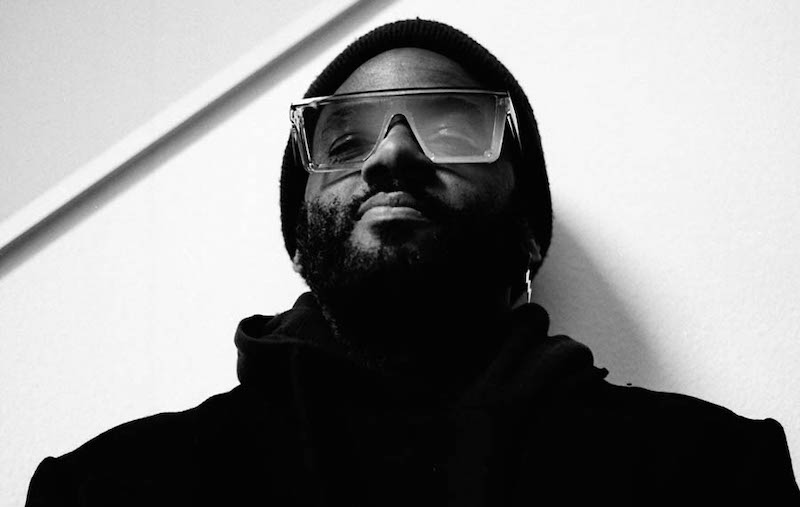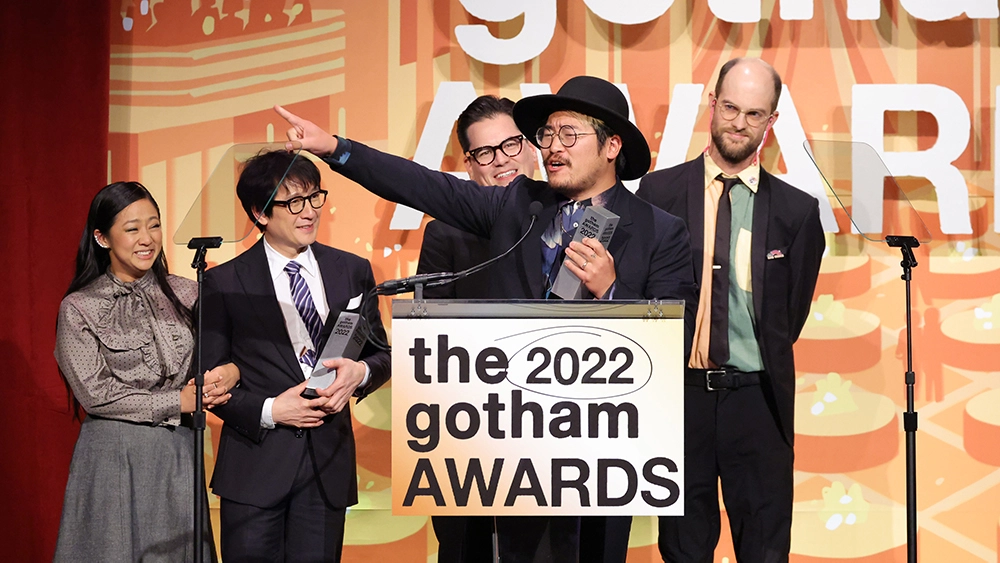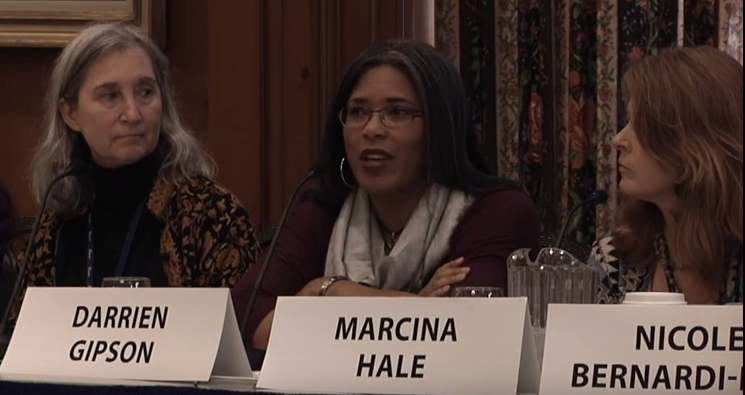Like many film school grads, CAREY WILLIAMS went from school (in his case, Florida State University) to Los Angeles to make his way, PA’ing on feature films and directing music videos until receiving industry recognition for his short films. His 2012 short Cherry Waves won the HBO Short Film Competition at the American Black Film Festival as well as awards at the San Diego Film Festival, NBC Shortcuts, and HollyShorts. From there, Williams went on to direct on the web series Banshee Origins for Cinemax and in 2018, was named as one of Filmmaker Magazine’s 25 New Faces of Independent Film. That same year, he collaborated with screenwriter K.D. Dávila on a short for Film Independent’s Project Involve program (more on that movie later). Williams made his feature directorial debut, the Shakespeare update R#J, which premiered at Sundance in 2021. But Williams didn’t wait long to bask in that success – he got right to work on his next feature, a re-visitation of that award-winning 2018 Project Involve short, Emergency.
Also written by Dávila, the feature-length EMERGENCY — about college students of color dealing with the potential repercussions of finding a passed-out white girl in their house — has been expanded into a sprawling cinematic “one crazy night” where real-world consequences lurk around every corner for Sean, Kunle, and Carlos (played by RJ Cyler, Donald Elise Watkins, and Sebastian Chacon, respectively). Maddie Nichols co-stars as their semi-conscious intruder, with Sabrina Carpenter as her sister on the hunt to track her down. The feature premiered at the 2022 Sundance Film Festival and will be released by Amazon Studios in theaters on May 20, and streaming on Prime Video on May 27.
Carey Williams took the time to chat with us to discuss the feature version of Emergency, filming at night, working with Amazon, making mixtapes for actors, and more.
——
COLIN McCORMACK: The film started as a short for Film Independent’s Project Involve. What stage was it in when you first came across it? Was it a completed short script or still in the pitch stage?
CAREY WILLIAMS: It was a completed short script. The way that program worked was the writers would submit their scripts and then the directors — I was one of the directors in the directing track — would pitch on the ones that we responded to.
CM: Once the process of Project Involve was completed and you started getting responses to the short, whose idea was it to expand it to feature-length?
CW: It was my idea and it was kind of an off-the-cuff comment I made at SXSW. We had just won the Grand Jury Award there and someone had asked what we were doing with it further and I just blurted out that we’re making a feature. I had not discussed it with K.D. at all, it was kind of an in-the-moment-of-happiness thing. So later, she was like, “Oh, we are?” [laughs]. The [short] wasn’t a proof of concept or anything, it was just a one-off, but I always felt like at the end of the short, I wanted to know where the relationship was going to go with Sean and Kunle. What did that relationship look like six months down the road after this night? So I got really excited about the idea of exploring their friendship more on that broader canvas of an hour-and-a-half to two hours.
[K.D.] was game for expanding the world too, so we set out to do it and she wrote it on spec. We had conversations about what it looked like and she said, “Let’s make it one night.” And I thought that was great because it kept the urgency and the immediacy of the situation. We can explore this relationship of these guys being pulled apart in this one night as they try to figure out what to do about this situation that’s been thrust upon them. They’re just trying to have the best night of their lives at the start of Spring Break and life said, “No, you’re not. This is what’s going to happen tonight.” That excited me, to see what we would be able to pull out during this night with them.
CM: Once you are happy with the completed feature script, who did you bring on then? Did Amazon come to it early on?
CW: They came on early; they nurtured this film from an early start. We found our production company in Temple Hill and Temple Hill took it to Amazon. And they believed in this film. They came on early, they were a part of the development and all of that, and just really nurtured it from the early stages to where it is now.
CM: Going from the world of short films and R#J, which was a lower-budget production, was it that much different having a big corporate entity behind the film? Did they treat it like an indie venture?
CW: Yeah, it definitely has differences. There were more people involved in the stages of development and the notes process. And during production more people are involved. I will say, it felt from a creative standpoint like an indie mentality. They believed in the ideas and the commentary that we were trying to put forth and didn’t try to water anything down, which was beautiful. There were some other places that we talked to about the film before we got with Temple Hill and Amazon, and they had fundamentally wanted to change some of the things about the film. But what we loved about Temple Hill and Amazon is that they didn’t. We were making the same movie, basically; they wanted to go down the road we were going down. That was really nice, to be with partners that had that mentality. But there’s definitely a difference when you have more money and more days and all that stuff. Also being in the throes of COVID when you’re trying to make a film, there are differences there too.

CM: For casting an adaptation of a previous work, how much do you need to reset your expectations for a given performance? Are you viewing them as entirely different characters for the feature version?
CW: I feel like I re-envisioned them in a way because I did a lot more research into their backstories and who they were. We fleshed them out. Where do they live? We introduced their families. We see Sean’s family, we hear from Kunle’s family. It was, for me, not really thinking about who they were in that iteration, and this is sort of a new take on them. But it’s still the same people because I was more informed as to where they came from. I wasn’t really thinking about what we had established before. In physicality, they’re quite different from what they were before, which is fine. And I feel very blessed with the actors that I got in this feature. They brought so much to the roles themselves that it’s not about trying to do what was done before. They embodied these people in their interpretation that really honored what we were trying to get at in the script, which was beautiful.
CM: In terms of character work, I heard you talk before about making mixtapes for your cast.
CW: Yeah.
CM: Is it character-specific or a general mixtape of the overall vibe for everyone? Does each actor get their own?
CW: I made a general mixtape for everybody to get and I put things in there that I felt spoke to each of the characters. So it was kind of all over. In a lot of ways, this film is a bit of an ensemble. There are a lot of characters that we’re speaking to. So I wanted to share that with everybody, so everybody had a sense of what I’m thinking. But then I asked Donald and RJ to give me a mixtape of what they thought their characters listened to. That’s a dialogue I can start with them through music about, “How do you see this character musically?” I can digest that and see how that lines up with where I am. Some things were a surprise. Some things were like, Oh okay, that’s new and interesting. Now I can take that and do what I will with it — or not — and we can have conversations about it. I loved that process. I’m going to keep doing that on my projects and hopefully people like it. I’m a music head, bottom line, so I like the process of making mixtapes for people and sharing music, and when I get stuff back that’s always exciting.
CM: In setting a tone for the production, there are some really fun and energetic scenes, some tense and emotional scenes; on top of that you had COVID to worry about, and I assume very, very late nights or early mornings to shoot. How did you go about setting a tone for the set when there are a lot of emotional ups and downs at play?
CW: You know, I honestly try to set a tone of openness with the actors. And I also surround myself with people that I enjoy being around and try to keep a good vibe with people. At the end of the day, my job is to really get honest performances from actors. That’s what it’s about. So with the actors, it’s creating an environment where they feel like it’s safe to try things. To suggest ideas, to go off-script if they want to, because they’ve done all the work of embodying those roles. They know those characters better than I do because I’m thinking about all these things, they’re thinking of that character and how that character interacts with this other character. So I like to listen to what they have to say. I like to listen to, What’s your idea on that? Oh, that’s probably better than what I was thinking. Regardless, let’s try it. I think that kept things light. I think it kept people feeling like this is a collaboration, not, “Stand here. Move here. Say this. Say that.” Another thing that was great about it was the cast all really vibed well. That was maybe a direct result of them starting to hang out early on when we got to Atlanta. Really spending time with each other. They all clicked and liked each other, so that was great.
CM: Any tips on how to survive a night shoot? Were you able to get any sleep at all?
CW: Shiiit. [Laughs] Man, I do not know how I did that. What I would do is get up early. I’m a morning person by nature, so I would get up and I would try to do a little work on the day’s work. And I would put on ambient music and try to meditate for an hour or so, and then get in the car and I would blast JPEGMAFIA or some hype-ass music before I got to set for that night and try to get into the mindset. And just pound coffee, man. It was definitely a turnaround for me, but it was a lot of fun on set. In between takes, Donald and RJ, having those guys on set it’s just a party. They’re infectious to everybody. It was definitely different to work all nights for basically 30 days, but it was cool.
CM: When it came time to put a cut together, the film really balances its tone well. Did that take nonstop versions to get that right?
CW: Let me tell you, getting that right is a process. It’s that whole [question] of, How long do you stay in a thing before we’ve overstayed our welcome? Creating those little shades here and there. I had a great editor, Lam Nguyen. He and I had just worked together on R#J and he came over. It’s the next writing of the movie, right? My original cut was like three hours because we had so much fun stuff that I thought was great. It was just about paring that down, keeping the immediacy and the urgency of this night, but not losing the things that needed to breathe. So Lam really did a great job in creating this rhythm that we needed for it to feel comedic when it needed to be, but also feel reflective in some places and feel dramatic. That took time. It was a little bit of trial and error.
I’m not really much of a comedy person. My stuff is usually pretty dark and serious, so shading those comedy beats was some work. But we got through it. It’s one of those things that’s tricky because it’s like, “How much do we mess with this before we show people to get a gauge of how it’s affecting them?” There’s always that “Oh, God!” [feeling] of the first cut you’re going to show people and how it’s going to land. I was never worried about our performances. Our performances were always really singing, it was just a matter of getting those comedy beats just right.
CM: Now that Emergency is about to come out in theaters and on Prime, what’s next for you? For future projects or any updates with R#J?
CW: I don’t know. R#J, I’m not quite sure about. Hopefully that will see the light of day soon. I just want to keep creating challenging material. For me as an artist, I want to create material that’s going to stick with a viewer beyond the viewing. [Something] that’s going to have someone thinking about what they saw long after they’ve experienced it. So whatever I do next — I’m looking at a few things — I want it to be that, I don’t want it to be disposable. Also, I’m definitely interested in doing some episodic stuff. There’s a lot of great episodic television that’s really impactful, so I’m curious to get into that world. Yeah, I’m ready for the next thing. Once this gets out, I’m like, “All right, let’s get back to work! Let’s do it.”
__
Thanks to Carey for talking to us about EMERGENCY.
If you’re an independent filmmaker or know of an independent film-related topic we should write about, email blogadmin@sagindie.org for consideration.




